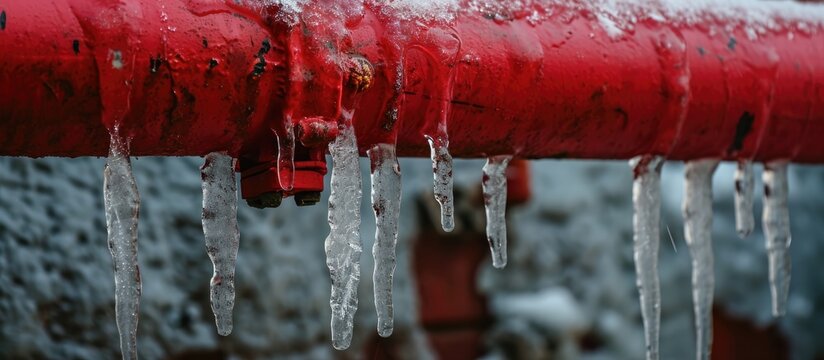Avoiding Frozen Pipes: Effective Methods for Winter
Avoiding Frozen Pipes: Effective Methods for Winter
Blog Article
In this article below you'll find some amazing tips around Prevent Frozen Pipes .

Winter can damage your plumbing, specifically by freezing pipes. Right here's how to avoid it from happening and what to do if it does.
Introduction
As temperature levels decline, the danger of icy pipes boosts, possibly leading to expensive fixings and water damages. Understanding exactly how to avoid icy pipelines is essential for house owners in cool climates.
Recognizing Icy Pipelines
What triggers pipelines to ice up?
Pipes ice up when exposed to temperatures listed below 32 ° F (0 ° C) for extended durations. As water inside the pipes ices up, it broadens, putting pressure on the pipeline wall surfaces and potentially causing them to burst.
Threats and damages
Frozen pipelines can lead to water supply disruptions, home damage, and pricey repair services. Ruptured pipes can flooding homes and create substantial architectural damages.
Signs of Frozen Piping
Determining frozen pipelines early can prevent them from bursting.
Exactly how to recognize frozen pipelines
Look for lowered water circulation from taps, uncommon odors or sounds from pipelines, and visible frost on subjected pipes.
Avoidance Tips
Shielding susceptible pipes
Cover pipelines in insulation sleeves or make use of heat tape to safeguard them from freezing temperature levels. Concentrate on pipelines in unheated or external locations of the home.
Home heating strategies
Keep interior spaces appropriately warmed, specifically locations with pipes. Open cabinet doors to allow cozy air to distribute around pipes under sinks.
Safeguarding Outdoor Pipes
Yard hose pipes and outdoor taps
Detach and drain yard tubes prior to wintertime. Install frost-proof faucets or cover outside faucets with insulated caps.
What to Do If Your Pipes Freeze
Immediate activities to take
If you presume icy pipes, keep taps open to alleviate stress as the ice thaws. Use a hairdryer or towels soaked in warm water to thaw pipelines gradually.
Long-Term Solutions
Architectural changes
Take into consideration rerouting pipelines away from exterior walls or unheated areas. Include added insulation to attics, basements, and crawl spaces.
Upgrading insulation
Purchase premium insulation for pipelines, attic rooms, and wall surfaces. Proper insulation helps maintain regular temperatures and decreases the danger of frozen pipes.
Conclusion
Stopping frozen pipes calls for proactive measures and fast feedbacks. By recognizing the reasons, indications, and preventive measures, homeowners can shield their pipes during cold weather.
5 Ways to Prevent Frozen Pipes
Drain Outdoor Faucets and Disconnect Hoses
First, close the shut-off valve that controls the flow of water in the pipe to your outdoor faucet. Then, head outside to disconnect and drain your hose and open the outdoor faucet to allow the water to completely drain out of the line. Turn off the faucet when done. Finally, head back to the shut-off valve and drain the remaining water inside the pipe into a bucket or container. Additionally, if you have a home irrigation system, you should consider hiring an expert to clear the system of water each year.
Insulate Pipes
One of the best and most cost-effective methods for preventing frozen water pipes is to wrap your pipes with insulation. This is especially important for areas in your home that aren’t exposed to heat, such as an attic. We suggest using foam sleeves, which can typically be found at your local hardware store.
Keep Heat Running at 65
Your pipes are located inside your walls, and the temperature there is much colder than the rest of the house. To prevent your pipes from freezing, The Insurance Information Institute suggests that you keep your home heated to at least 65 degrees, even when traveling. You may want to invest in smart devices that can keep an eye on the temperature in your home while you’re away.
Leave Water Dripping
Moving water — even a small trickle — can prevent ice from forming inside your pipes. When freezing temps are imminent, start a drip of water from all faucets that serve exposed pipes. Leaving a few faucets running will also help relieve pressure inside the pipes and help prevent a rupture if the water inside freezes.
Open Cupboard Doors
Warm your kitchen and bathroom pipes by opening cupboards and vanities. You should also leave your interior doors ajar to help warm air circulate evenly throughout your home.

Hopefully you liked our article about 6 Ways to Prevent Frozen Pipes. Thanks so much for spending some time to read our article. Are you aware of another individual who is involved in the subject? Why not promote it. Thank you for going through it.
Book A Free Estimate Report this page